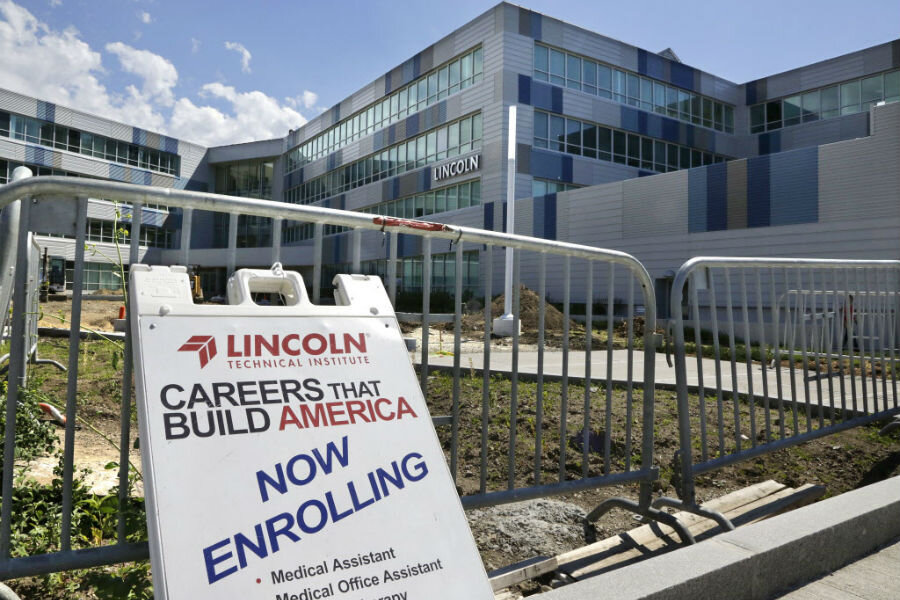Five things to know before attending a for-profit college
Loading...
For-profit colleges: You may have heard about them in advertisements blaring on the radio and commercials flickering on your television screen.
The schools, which are beholden to stockholders and investors, aim to attract non-traditional students who may feel like a traditional college or university is out of reach.
But in addition to those ads, you may have heard about legal action against some prominent players in the industry.
Corinthian Colleges, formerly one of the largest companies behind for-profit schools, shut down its campuses and filed for bankruptcy in 2015 after the Department of Education fined the company for misrepresenting job placement rates for graduates. Corinthian also advertised programs it didn’t offer and used illegal debt collection practices, according to the California attorney general’s office.
In another example, the now-defunct Trump University — a for-profit school started by Republican presidential nominee Donald Trump — is facing lawsuits alleging the company didn’t follow through on its promises to teach unique courses in real estate investing.
For-profit colleges are expected to earn money, unlike most public universities, community colleges and nonprofit private schools. Those institutions are funded by taxes, tuition and endowments, and are accountable to state and federal governments, taxpayers and donors. For-profit schools aren’t all inherently bad, but as a whole, they are likely to lead to poorer outcomes for students.
Various government entities, including the federal Department of Education, are trying to get for-profit colleges to clean up their acts. But for now, it’s probably better to steer clear of for-profit schools. Here’s why.
1. You likely will pay more
On average, it’s cheaper to attend an in-state public university or community college than a for-profit college. This chart breaks down the cost difference.
Average cost of tuition and fees for undergraduates in 2015-16
| Public in-state | For-profit | |
|---|---|---|
| Two-year college | $3,941 | $14,864 |
| Four-year college | $8,141 | $16,066 |
Source: National Center for Education Statistics, July 2016
2. You are less likely to graduate
The 2013 graduation rate for students at for-profit colleges was 32%, compared to 55% for all students, including those who attended public and private schools, according to Department of Education data released in 2015. And students who don’t graduate earn less than before they enrolled in for-profit schools, according to a 2016 National Bureau of Economic Research paper.
Students drop out of for-profit programs for reasons including subpar teachers and curricula, and a lack of student support services like tutoring and advising, according to a 2012 report by a U.S. Senate committee.
3. You’re more likely to be unemployed
For-profit colleges have been accused of fudging data about how many of their students get jobs after graduation to make it look like their programs are more effective than they are. Students who attend for-profit colleges are more likely to be unemployed six years after starting at the school, according to a 2011 National Bureau of Economic Research paper.
4. You likely will have more student debt
A whopping 77% of those attending for-profit colleges in 2012-13 took student loans, compared to 49% of overall students, according to 2015 National Center for Education Statistics data. Those with student loans at for-profit colleges also took on more debt than peers at other schools. A student at a for-profit college borrowed an average $8,098 in 2012-13, while the overall student borrowed $6,899 on average.
5. You are more likely to default on loans
Students who borrow to pay for education at for-profit schools are more likely to default on, or be unable to pay, that debt. The default rate for borrowers who entered repayment between Oct. 1, 2010, and Sept. 30, 2011, and defaulted by September 2013 was 19% of students at for-profit schools, compared to 11% of students overall, according to 2015 Department of Education data.
Alternatives to consider
Instead of a for-profit school, consider a community college or a public in-state university — those options likely will be more affordable and reputable. If you want to attend a for-profit college, the National Association for College Admission Counseling has a list of questions to ask before you enroll.
Not sure if a school is a for-profit institution? Look it up using the National Center for Education Statistics College Navigator tool. It also will give you information about the school’s retention rates, accreditation, financial aid and student-loan default rates.
Teddy Nykiel is a staff writer at NerdWallet, a personal finance website. Email: teddy@nerdwallet.com. Twitter: @teddynykiel.
This article was written by NerdWallet and was originally published by USA Today College.







